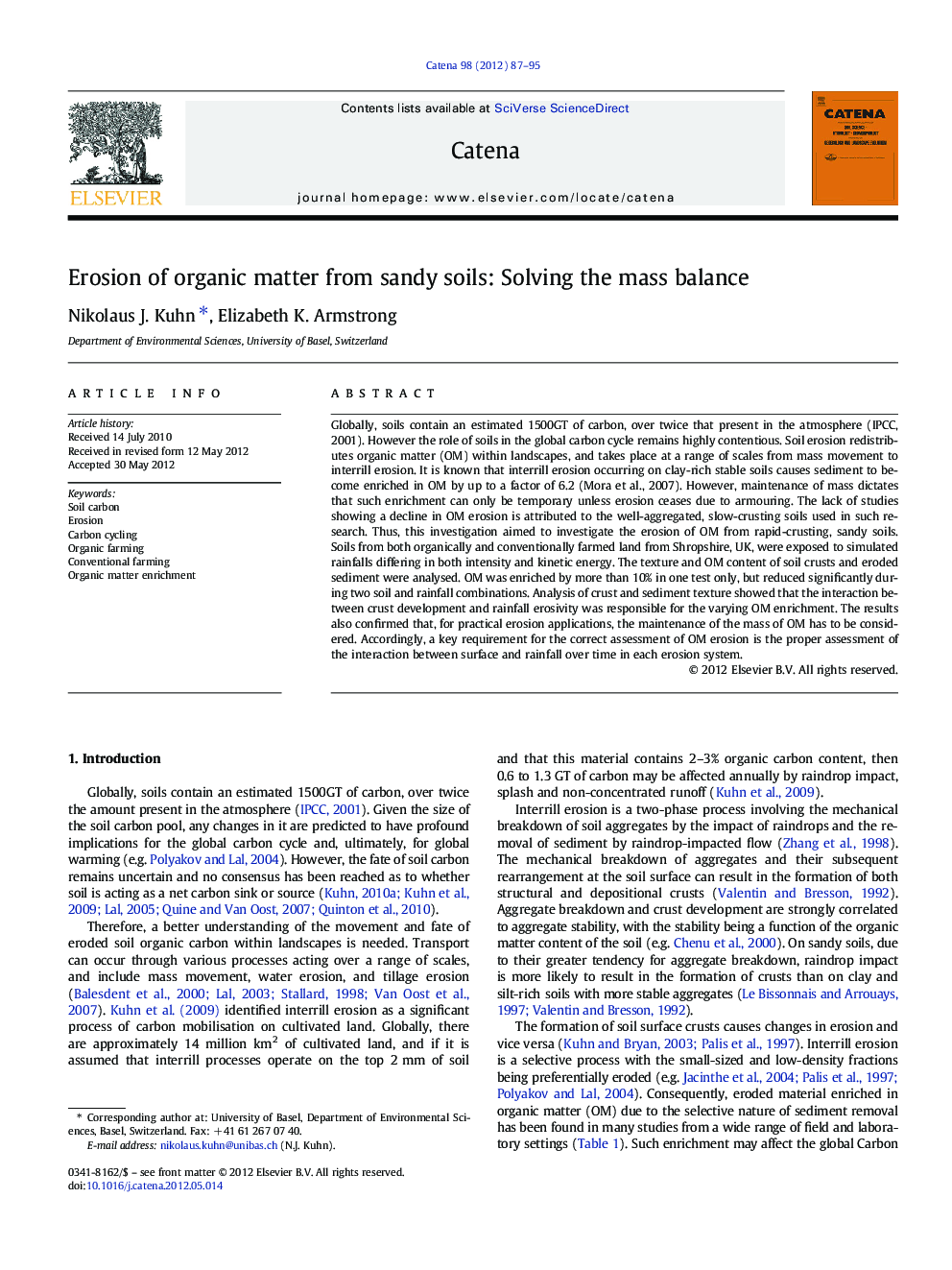| Article ID | Journal | Published Year | Pages | File Type |
|---|---|---|---|---|
| 4571847 | CATENA | 2012 | 9 Pages |
Globally, soils contain an estimated 1500GT of carbon, over twice that present in the atmosphere (IPCC, 2001). However the role of soils in the global carbon cycle remains highly contentious. Soil erosion redistributes organic matter (OM) within landscapes, and takes place at a range of scales from mass movement to interrill erosion. It is known that interrill erosion occurring on clay-rich stable soils causes sediment to become enriched in OM by up to a factor of 6.2 (Mora et al., 2007). However, maintenance of mass dictates that such enrichment can only be temporary unless erosion ceases due to armouring. The lack of studies showing a decline in OM erosion is attributed to the well-aggregated, slow-crusting soils used in such research. Thus, this investigation aimed to investigate the erosion of OM from rapid-crusting, sandy soils. Soils from both organically and conventionally farmed land from Shropshire, UK, were exposed to simulated rainfalls differing in both intensity and kinetic energy. The texture and OM content of soil crusts and eroded sediment were analysed. OM was enriched by more than 10% in one test only, but reduced significantly during two soil and rainfall combinations. Analysis of crust and sediment texture showed that the interaction between crust development and rainfall erosivity was responsible for the varying OM enrichment. The results also confirmed that, for practical erosion applications, the maintenance of the mass of OM has to be considered. Accordingly, a key requirement for the correct assessment of OM erosion is the proper assessment of the interaction between surface and rainfall over time in each erosion system.
► Observed enrichment of soil organic matter (SOM) in sediment cannot be permanent. ► Maintenance of mass dictates decline overtime. ► Erosion experiments show decline of SOM in sediment over time. ► Change in soil surface texture confirms depletion of SOM in crust. ► SOM enrichment must be seen in conjunction of crusting environment.
